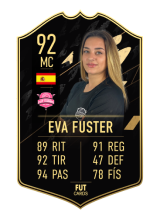Understanding the relationship between game mechanics and human cognition offers valuable insights into how we approach complex problems in both entertainment and education. By examining how modern games incorporate elements that reflect our problem-solving processes, we can better appreciate their potential as tools for cognitive development.
- Fundamental Principles of Human Problem-Solving
- Core Game Mechanics as Cognitive Mirrors
- Case Study: Pirots 4 as a Modern Illustration
- Non-Obvious Parallels Between Game Mechanics and Human Cognition
- Educational Implications: Leveraging Game Mechanics for Skill Development
- Limitations and Ethical Considerations
- Conclusion: Embracing Game Mechanics as Cognitive Learning Tools
Fundamental Principles of Human Problem-Solving
Human problem-solving relies on several core cognitive processes that enable us to analyze, adapt, and find solutions. These include analytical thinking, which involves breaking down complex problems into manageable parts; pattern recognition, essential for identifying familiar structures and cues; and strategic planning, which guides long-term decision-making.
Moreover, trial and error, coupled with learning from feedback, constitute fundamental adaptive mechanisms. When we encounter a challenge, we often test different approaches, learn from successes and failures, and refine our strategies accordingly. These principles are not only vital for everyday problem-solving but are also explicitly embedded in game design, where players navigate through challenges that mirror these cognitive processes.
Core Game Mechanics as Cognitive Mirrors
Symbolism and Decision-Making
Game elements such as upgrades, wilds, and bonuses serve as representations of strategic choices. For example, selecting an upgrade in a game can mirror prioritizing tasks based on their expected benefit — akin to resource allocation in real-world problem-solving. These mechanics encourage players to evaluate options critically, simulating decision-making under constraints.
Randomness and Probability
Elements of chance, like dice rolls or random symbol appearances, mimic risk assessment and probabilistic reasoning. Players constantly evaluate the likelihood of outcomes, developing an intuitive grasp of risk versus reward—an essential component of strategic thinking and financial decision-making.
Cascading Mechanics and Transformations
Mechanics such as cascading symbols or transformations in games reflect iterative problem-solving and adaptive thinking. Each successful match or combination can trigger further moves, resembling how solving one part of a problem often leads to new insights or steps, fostering a mindset of continuous exploration and adaptation.
Case Study: Pirots 4 as a Modern Illustration
Although primarily an entertainment product, explore the space station exemplifies many principles of human problem-solving through its design. Its blend of space and pirate themes acts as a metaphor for navigating uncharted strategies and adapting to new challenges.
The game’s cascading symbols demonstrate iterative problem-solving—each successful cascade opens opportunities for further moves, reflecting how continuous refinement and learning are essential in complex tasks. Bonuses and transformations simulate adaptive strategies, requiring players to manage resources and adjust tactics dynamically.
| Game Mechanics | Cognitive Process | Real-World Analogy |
|---|---|---|
| Cascading symbols | Iterative problem-solving | Refining a plan based on feedback |
| Bonuses & transformations | Adaptive resource management | Adjusting strategies during a project |
Non-Obvious Parallels Between Game Mechanics and Human Cognition
Beyond explicit mechanics, subtle parallels exist. Pattern recognition in matching symbols mirrors how humans solve puzzles by identifying familiar structures. Feedback loops in games resemble learning cycles—successes reinforce strategies, failures prompt adjustments, fostering cognitive flexibility.
“Games with well-designed feedback loops can accelerate learning by reinforcing successful strategies and highlighting areas for improvement, similar to how humans adapt through experience.”
Additionally, delayed gratification, such as waiting through bonus modes or cascading sequences, cultivates patience—an essential trait in problem-solving and decision-making.
Educational Implications: Leveraging Game Mechanics for Skill Development
Integrating game mechanics into educational tools creates engaging environments that promote critical thinking and strategy. For example, simulations that incorporate resource management, risk assessment, and iterative problem-solving can help students develop cognitive flexibility.
Using examples like Pirots 4 illustrates complex concepts through accessible gameplay, making abstract ideas tangible. Such gamified approaches have been shown to improve engagement and retention, fostering skills applicable beyond the game world.
Research indicates that gamified learning environments enhance cognitive flexibility and strategic thinking, essential skills in an increasingly complex world. As educators consider integrating these mechanics, understanding their cognitive parallels ensures effective application.
Limitations and Ethical Considerations
While game mechanics can mirror human cognition, over-reliance or design choices may oversimplify complex mental processes. For instance, excessive randomness or addictive features can detract from genuine skill development and raise ethical concerns.
Gambling elements embedded in some games pose risks of addiction, especially among vulnerable populations. Ethical game design should balance engagement with responsible play, ensuring that educational benefits are not compromised by exploitative mechanics.
Developers and educators must collaborate to create experiences that are both engaging and ethically sound, emphasizing long-term skill mastery over short-term entertainment.
Conclusion: Embracing Game Mechanics as Cognitive Learning Tools
Game mechanics serve as functional reflections of human problem-solving processes. Recognizing these parallels allows educators, developers, and players to harness the potential of well-designed games as powerful cognitive tools. The example of modern titles like explore the space station illustrates how engaging gameplay can model complex thinking patterns and foster strategic skills.
Looking forward, integrating advanced game mechanics—such as those in Pirots 4—into educational frameworks holds promise for enhancing cognitive flexibility, resource management, and long-term planning. Embracing this synergy between play and learning can lead to innovative approaches in developing the problem-solving capabilities vital for the challenges ahead.


